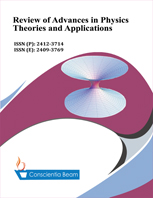Study of Layered Structure on Contact Boundary Area of Formation Panasogan-Waturanda by Applying Ground Penetrating Radar Method
DOI:
https://doi.org/10.18488/journal.75/2015.2.2/75.2.10.19Abstract
Study on Ground-penetrating radar (GPR) data from a common-offset profiling measurement carried out in the contact area between Panosogan and Waturanda Formations in Karangsambung, Kebumen – Central of Java is done. GPR RAMAC system is utilized. The aim of the study is to recognize and eliminate surface-scattering noise and ring-down effects, to image subsurface layered structure and to identify a contact area between Panosogan and Waturanda Formations. The processed data were analyzed with the help of instantaneous attributes and the so-called joint time frequency (JTFA) analysis. Study results show that some diffraction patterns appeared in radargram are resulting from scattering of surface-objects. These can be eliminated with f-k filtering and migration. Ring-down effect resulted from impedance mismatch between subsurface electrical properties and those of antenna is difficult to eliminate. However, it can be well recognized and analyzed in the JTF representation. Instantaneous attributes and JTF analysis are proved to be useful tools in imaging the contact area and subsurface layered structures.

